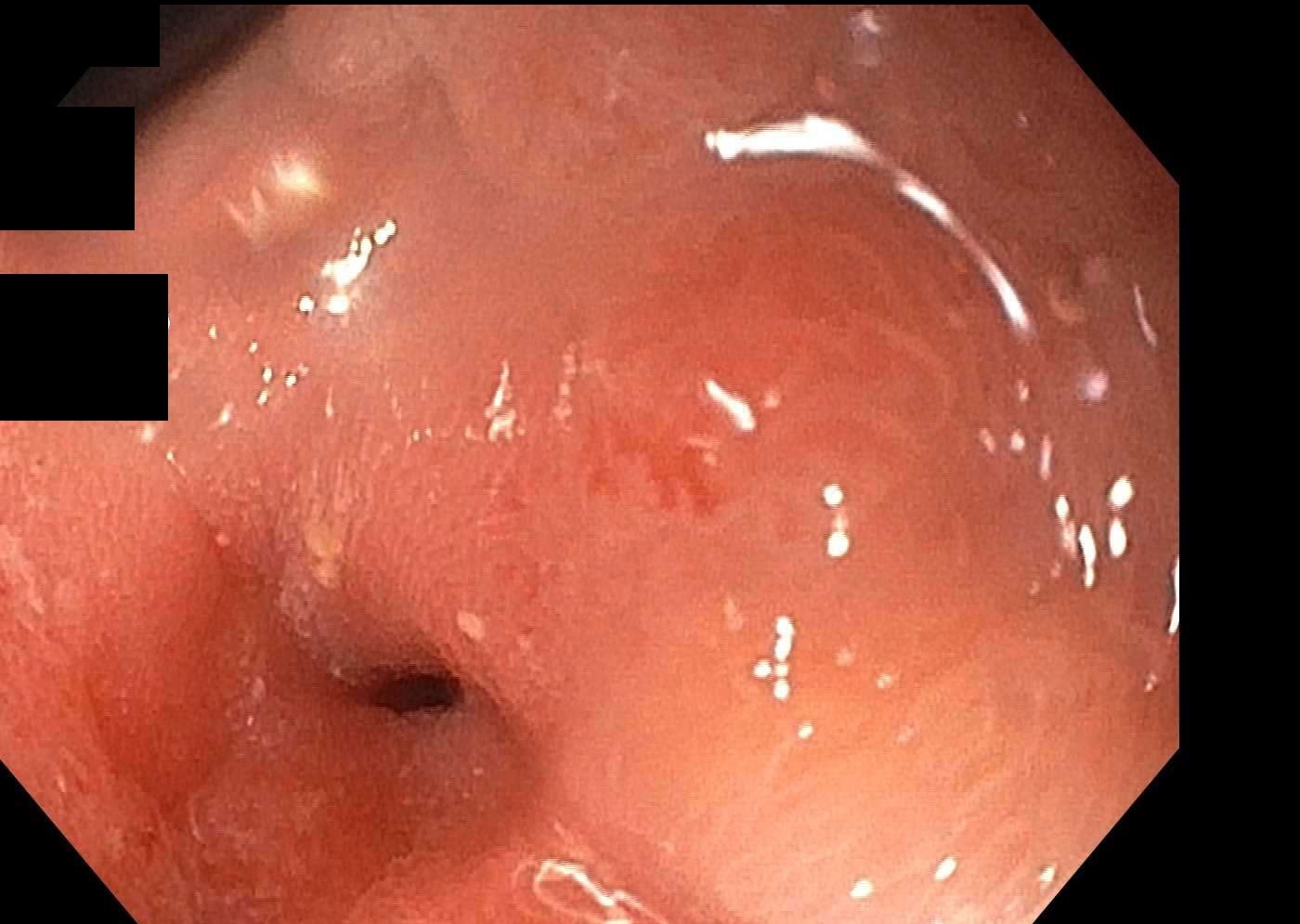Back
Poster Session A - Sunday Afternoon
A0726 - From Zero to Gyro: A 12-Month Trial of a Lumen-Apposing SEMS on a Benign Recalcitrant Post Surgical Stricture
Sunday, October 23, 2022
5:00 PM – 7:00 PM ET
Location: Crown Ballroom

Kuntal Bhowmick, MD
Brown University
Providence, RI
Presenting Author(s)
Award: Presidential Poster Award
Pranith Perera, MD, Kuntal Bhowmick, MD
Brown University, Providence, RI
Introduction: Short, post surgical benign recalcitrant strictures can present a challenge for endoscopic therapy. We demonstrate utilization of Lumen-Apposing Self-Expandable Metallic Stents (LASEMS) to treat short, recalcitrant strictures unresponsive to dilation, steroid injections where conventional stents are not feasible.
Case Description/Methods: 49 year old Female with a history of a Roux-En-Y gastric bypass presented to the ED with hypovolemia from poor oral intake due a recalcitrant GJ anastamosis stricture unresponsive to dilations with steroid injection. Patient had undergone gastric bypass 8 years prior to her presentation. 4 years after her surgery she developed nausea, vomiting, anorexia and early satiety. Unable to keep down any solid food, she resorted to a liquid diet. She declined any further surgical therapy or follow up. She surmised that this was ‘a consequence of her decision to pursue gastric bypass surgery’. She saw her PCP 8 years after her surgery with a BMI of 16; having not taken in any solids for 4 years. She was referred for an endoscopy which revealed a ‘pinpoint’ stricture. She underwent 7 upper endoscopies with progressive dilations/steroid injections with no success. She was referred to an advanced endoscopist after she presented to the ED with hypovolemia; now having issues with solids and liquids. A 20 mm x 10 mm LASEMS was placed through the stricture and removed after 8 weeks. She was able to tolerate solids and gain weight for 4 months until her symptoms recurred. Endoscopic examination revealed a return of the ‘pinpoint’ stricture. A twelve month trial of the 20 mm x 10 mm LASEMS was then performed. To prevent epithelialization of the stent, it was replaced every 2 months. Six months after the stent was removed, her GJ anastamosis was noted to have increased from ‘pinpoint’ to 18 mm. Three years post stent removal , she continues to tolerate solid foods and maintains a healthier BMI.
Discussion: Post surgical, benign, recalcitrant strictures can present a challenge to endoscopists once dilation methods have been exhausted. Conventional stent placement can be challenging and uncomfortable for patients who have a short stricture. LASEMS present a less invasive, safer alternative to treatment to surgical resection. They also present less of a migration risk when compared to conventional stents in small strictures. LASEMS can also be placed by general gastroenterologists with no EUS training via a therapeutic gastroscope.

Disclosures:
Pranith Perera, MD, Kuntal Bhowmick, MD. A0726 - From Zero to Gyro: A 12-Month Trial of a Lumen-Apposing SEMS on a Benign Recalcitrant Post Surgical Stricture, ACG 2022 Annual Scientific Meeting Abstracts. Charlotte, NC: American College of Gastroenterology.
Pranith Perera, MD, Kuntal Bhowmick, MD
Brown University, Providence, RI
Introduction: Short, post surgical benign recalcitrant strictures can present a challenge for endoscopic therapy. We demonstrate utilization of Lumen-Apposing Self-Expandable Metallic Stents (LASEMS) to treat short, recalcitrant strictures unresponsive to dilation, steroid injections where conventional stents are not feasible.
Case Description/Methods: 49 year old Female with a history of a Roux-En-Y gastric bypass presented to the ED with hypovolemia from poor oral intake due a recalcitrant GJ anastamosis stricture unresponsive to dilations with steroid injection. Patient had undergone gastric bypass 8 years prior to her presentation. 4 years after her surgery she developed nausea, vomiting, anorexia and early satiety. Unable to keep down any solid food, she resorted to a liquid diet. She declined any further surgical therapy or follow up. She surmised that this was ‘a consequence of her decision to pursue gastric bypass surgery’. She saw her PCP 8 years after her surgery with a BMI of 16; having not taken in any solids for 4 years. She was referred for an endoscopy which revealed a ‘pinpoint’ stricture. She underwent 7 upper endoscopies with progressive dilations/steroid injections with no success. She was referred to an advanced endoscopist after she presented to the ED with hypovolemia; now having issues with solids and liquids. A 20 mm x 10 mm LASEMS was placed through the stricture and removed after 8 weeks. She was able to tolerate solids and gain weight for 4 months until her symptoms recurred. Endoscopic examination revealed a return of the ‘pinpoint’ stricture. A twelve month trial of the 20 mm x 10 mm LASEMS was then performed. To prevent epithelialization of the stent, it was replaced every 2 months. Six months after the stent was removed, her GJ anastamosis was noted to have increased from ‘pinpoint’ to 18 mm. Three years post stent removal , she continues to tolerate solid foods and maintains a healthier BMI.
Discussion: Post surgical, benign, recalcitrant strictures can present a challenge to endoscopists once dilation methods have been exhausted. Conventional stent placement can be challenging and uncomfortable for patients who have a short stricture. LASEMS present a less invasive, safer alternative to treatment to surgical resection. They also present less of a migration risk when compared to conventional stents in small strictures. LASEMS can also be placed by general gastroenterologists with no EUS training via a therapeutic gastroscope.

Figure: Stricture prior to stent placement (s/p 7 dilations and steroid injections)
Disclosures:
Pranith Perera indicated no relevant financial relationships.
Kuntal Bhowmick indicated no relevant financial relationships.
Pranith Perera, MD, Kuntal Bhowmick, MD. A0726 - From Zero to Gyro: A 12-Month Trial of a Lumen-Apposing SEMS on a Benign Recalcitrant Post Surgical Stricture, ACG 2022 Annual Scientific Meeting Abstracts. Charlotte, NC: American College of Gastroenterology.

